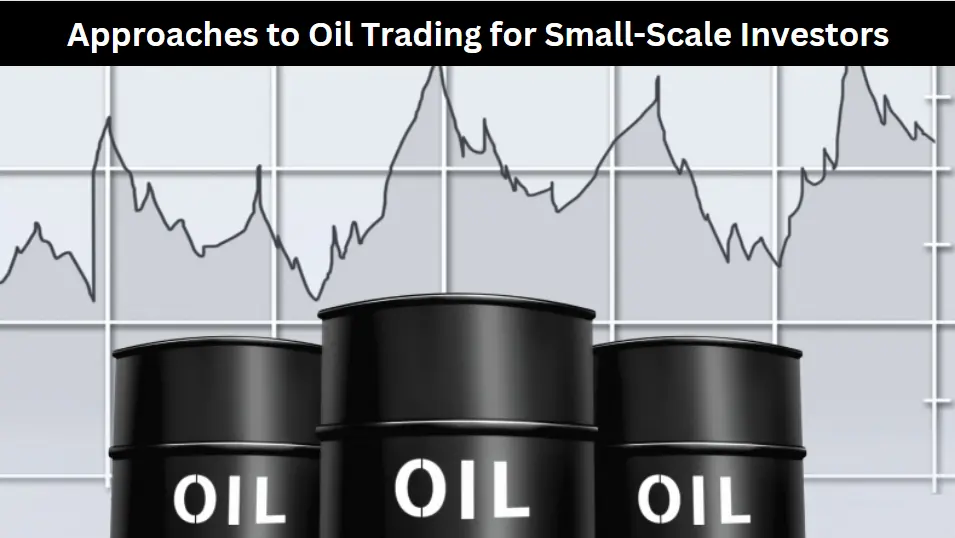In the world of financial markets, oil trading holds immense potential for both seasoned investors and newcomers. With its high liquidity, volatility, and the opportunity to generate significant profits, oil trading has become a favored choice among small investors looking to diversify their portfolios. In this comprehensive guide, we will explore effective oil trading strategies tailored specifically for small investors. By the end, you’ll be equipped with valuable insights and actionable steps to make informed decisions in the dynamic oil trading market. Don’t miss out on this piece of information about Bitcoin’s impact on mobile apps’ future.
Understanding Oil Trading
Before diving into strategies, it’s essential to grasp the fundamental aspects of oil trading. Oil is a highly sought-after commodity due to its indispensable role in global energy consumption. As a small investor, understanding the factors that influence oil prices is crucial to make informed trading decisions.
Factors Affecting Oil Prices
- Supply and Demand: The balance between global oil supply and demand plays a significant role in price determination. Economic growth, geopolitical tensions, and production quotas by oil-producing countries are key factors influencing the supply-demand dynamics.
- Geopolitical Events: Political instability, conflicts, and natural disasters in oil-producing regions can cause disruptions in supply, leading to price fluctuations.
- OPEC Influence: The Organization of the Petroleum Exporting Countries (OPEC) plays a vital role in the global oil market. Decisions regarding production levels and quotas by OPEC member countries can significantly impact oil prices.
- Currency Movements: Oil prices are closely tied to currency exchange rates. A weaker currency can lead to higher oil prices, as it requires more currency to purchase a barrel of oil.
- Inventories and Reserves: Reports on crude oil inventories, strategic reserves, and refinery utilization can affect market sentiment and oil prices.
Types of Oil Trading
- Spot Trading: Spot trading involves buying or selling oil at the current market price with immediate settlement and physical delivery.
- Futures Trading: Futures contracts enable investors to buy or sell oil at a predetermined price and date in the future. It provides a way to speculate on future oil prices without physical delivery.
- Contract for Difference (CFD) Trading: CFD trading allows investors to speculate on oil price movements without owning the underlying asset. It provides flexibility and leveraged trading opportunities.
Oil Trading Strategies for Small Investors
As a small investor, employing effective strategies can enhance your chances of success in oil trading. It’s important to note that trading involves risks, and careful consideration should be given to personal financial goals and risk tolerance. Here are some proven strategies to consider:
Fundamental Analysis
Fundamental analysis involves evaluating various economic, political, and supply-demand factors to estimate the intrinsic value of oil. It focuses on understanding the underlying factors that may impact oil prices in the long term. Key components of fundamental analysis include:
- Macroeconomic Indicators: Analyzing GDP growth, inflation rates, interest rates, and employment data can provide insights into oil demand trends.
- Geopolitical Analysis: Monitoring geopolitical events and assessing their potential impact on oil supply can help predict price movements.
- Supply and Demand Analysis: Tracking global oil supply, inventories, and demand projections can aid in identifying potential price trends.
- Oil Market News: Staying updated with industry news, policy changes, and OPEC decisions can provide valuable insights for trading decisions.
Technical Analysis
Technical analysis focuses on studying historical price patterns, trends, and market indicators to predict future price movements. It involves the use of charts, technical indicators, and statistical tools to identify potential entry and exit points. Some common technical analysis tools include:
- Moving Averages: Tracking moving averages (e.g., 50-day and 200-day) can help identify trends and potential support or resistance levels.
- Relative Strength Index (RSI): RSI measures the speed and change of price movements, indicating overbought or oversold conditions.
- Bollinger Bands: Bollinger Bands indicate volatility and potential price breakouts, helping traders identify potential entry or exit points.
- Candlestick Patterns: Analyzing candlestick patterns can provide insights into market sentiment and potential trend reversals.
Risk Management
Implementing effective risk management strategies is crucial for long-term success in oil trading. Consider the following risk management techniques:
- Setting Stop Loss Orders: Placing stop-loss orders helps limit potential losses by automatically closing positions if the market moves against your expectations.
- Diversification: Spreading investments across different oil-related assets and other asset classes can help mitigate risk and reduce exposure to a single investment.
- Risk-Reward Ratio: Assessing potential profit targets and risk levels before entering a trade can ensure a favorable risk-reward ratio.
- Monitoring Margin Requirements: Keeping a close eye on margin requirements and maintaining sufficient account balances can prevent forced liquidation of positions.
Learning from Experienced Traders
Learning from experienced traders and industry experts can provide invaluable insights and practical knowledge. Consider joining trading communities, attending webinars, or following reputable financial publications to stay informed about the latest trends and strategies.
Conclusion
Oil trading presents a compelling opportunity for small investors to participate in the dynamic world of financial markets. By understanding the factors influencing oil prices, adopting effective strategies, and implementing sound risk management techniques, small investors can enhance their chances of success in this exciting sector. Remember, continuous learning, staying informed, and regularly evaluating your trading approach are key to achieving long-term profitability. As you embark on your oil trading journey, may the insights shared in this article guide you towards informed decision-making and prosperous outcomes.
